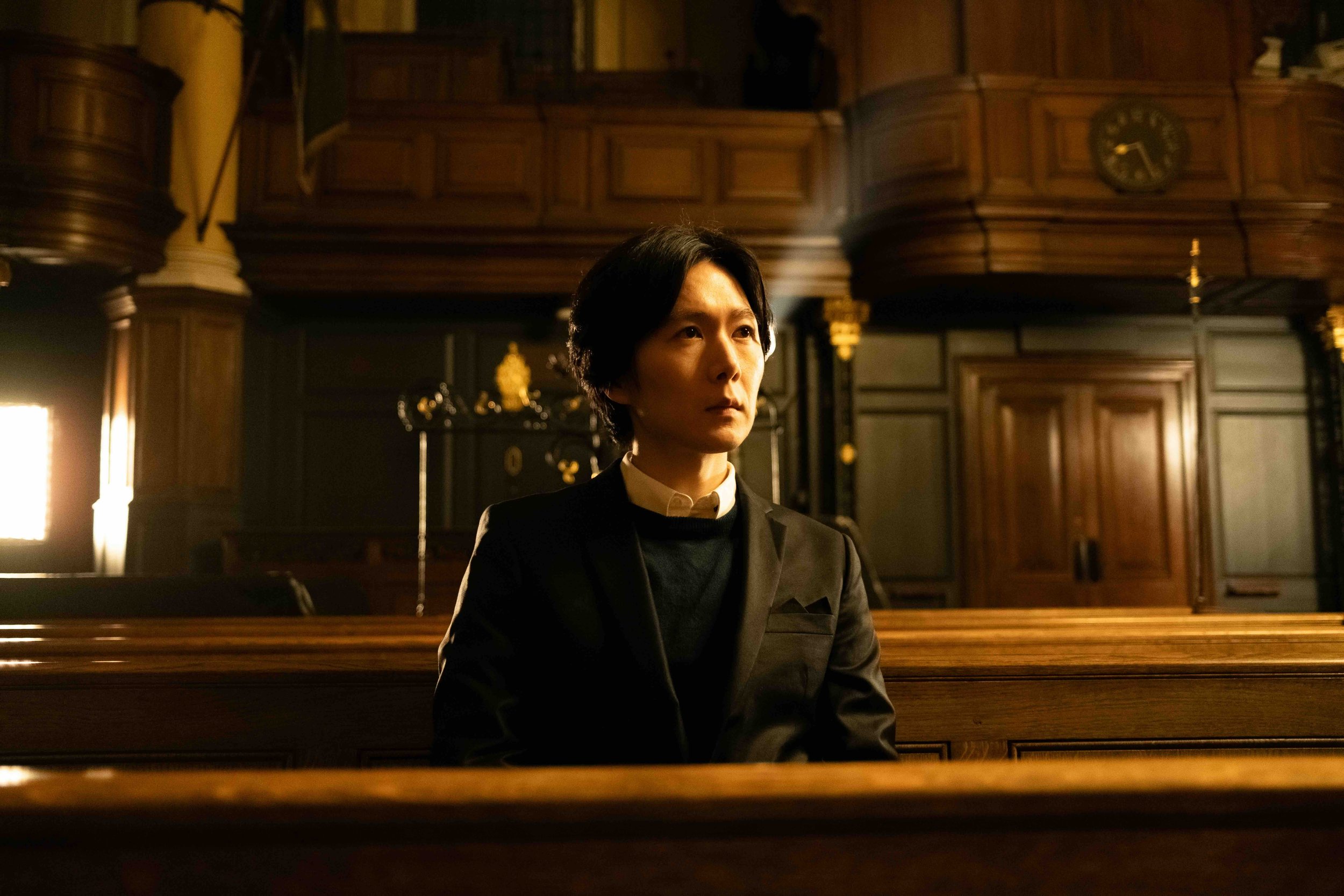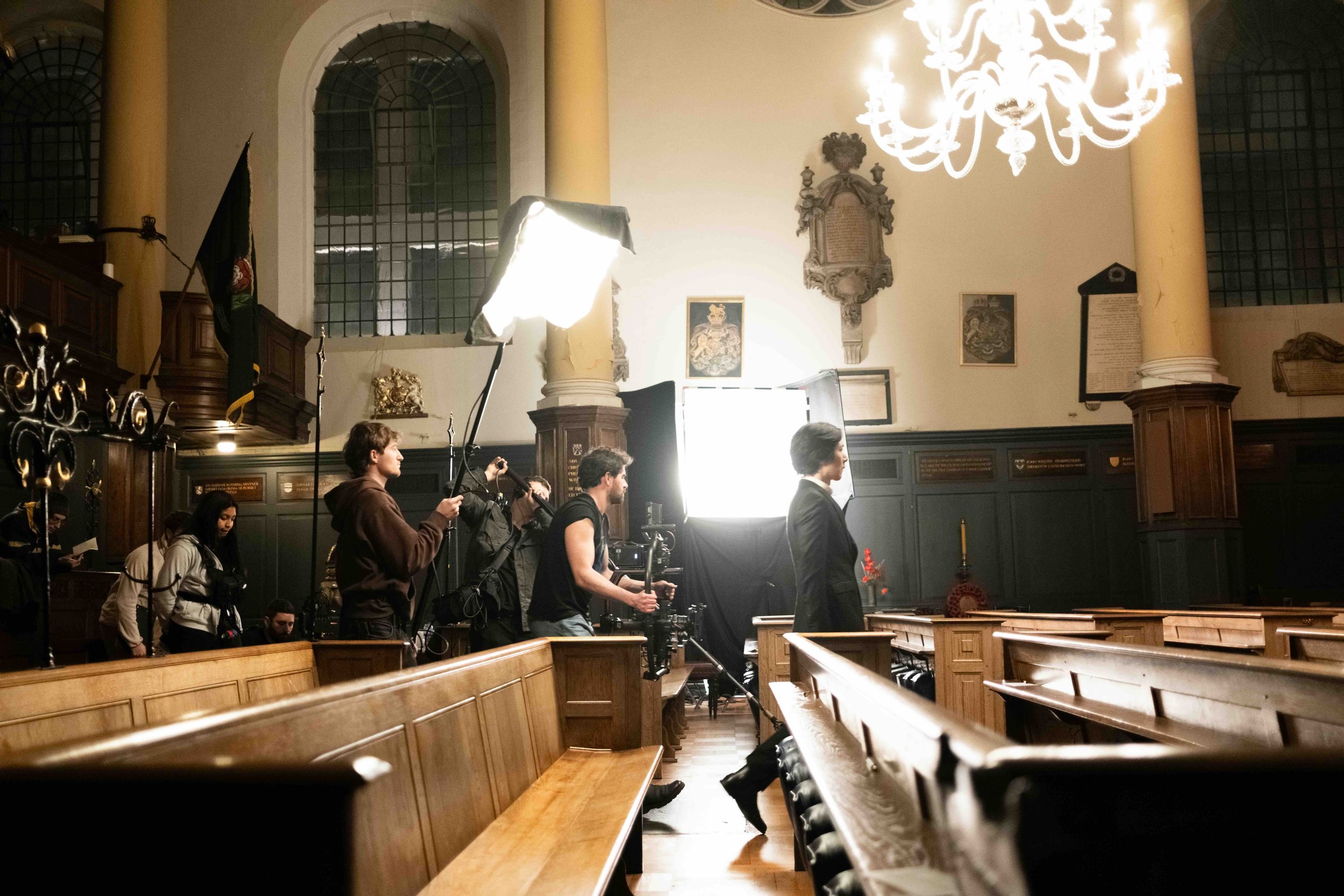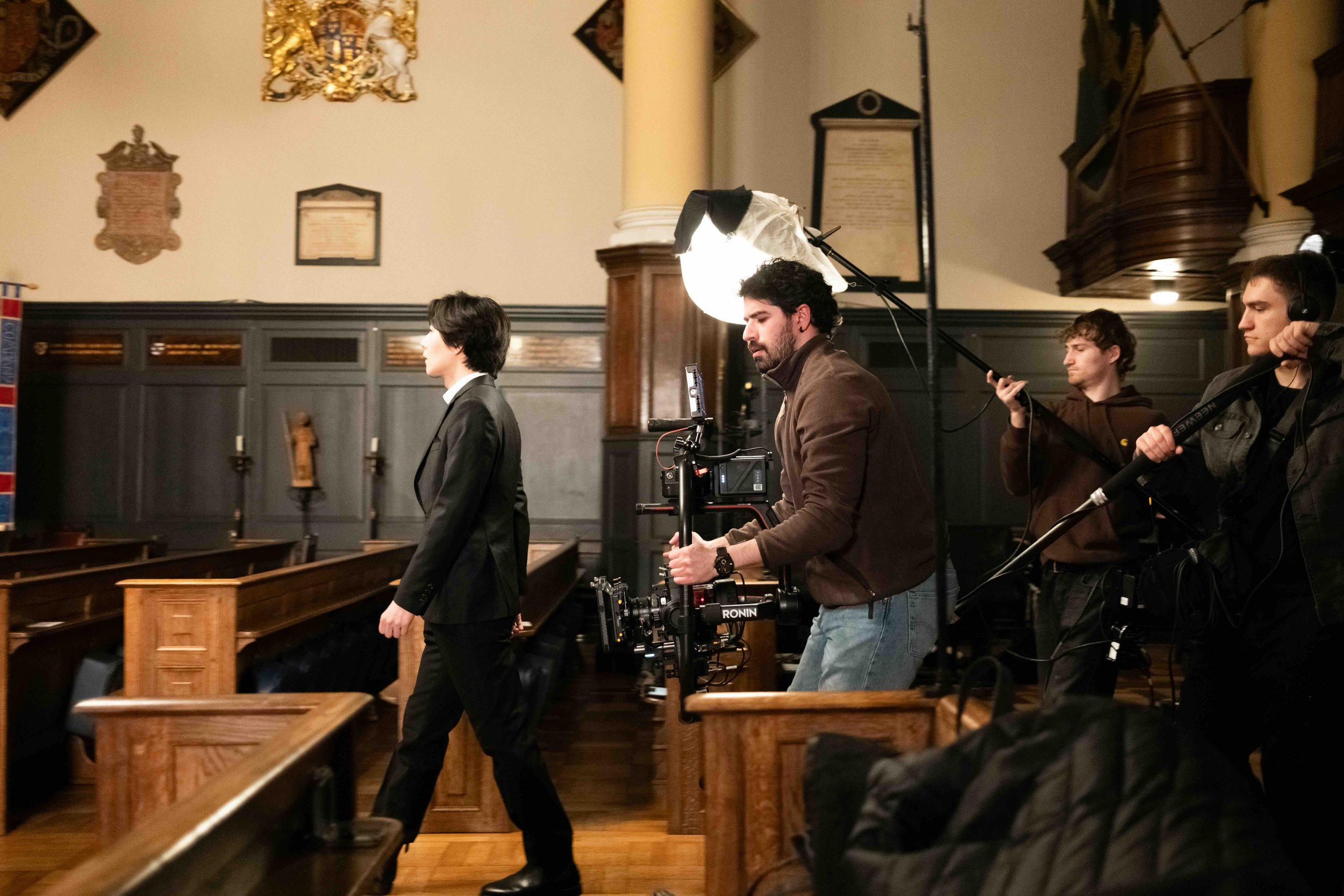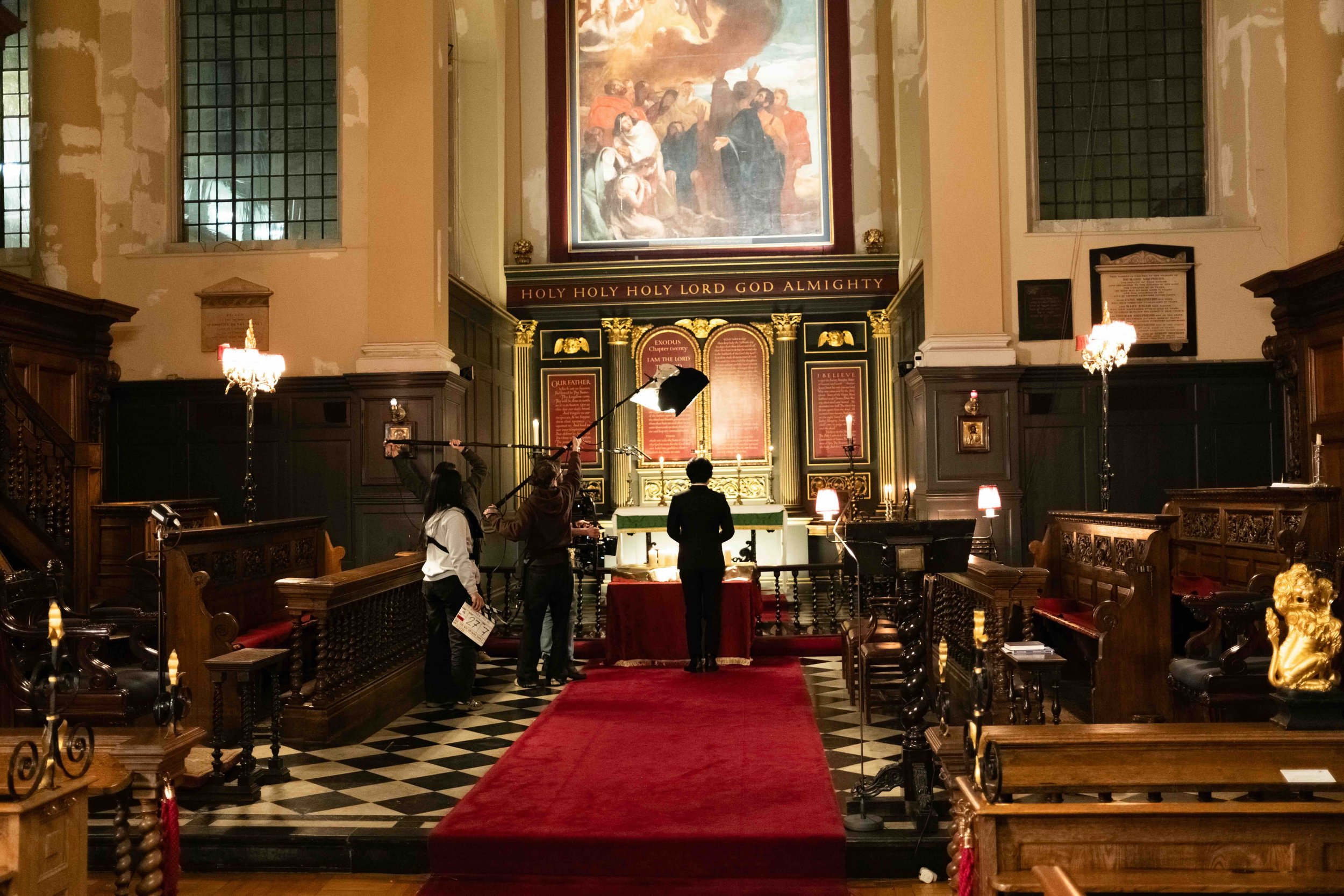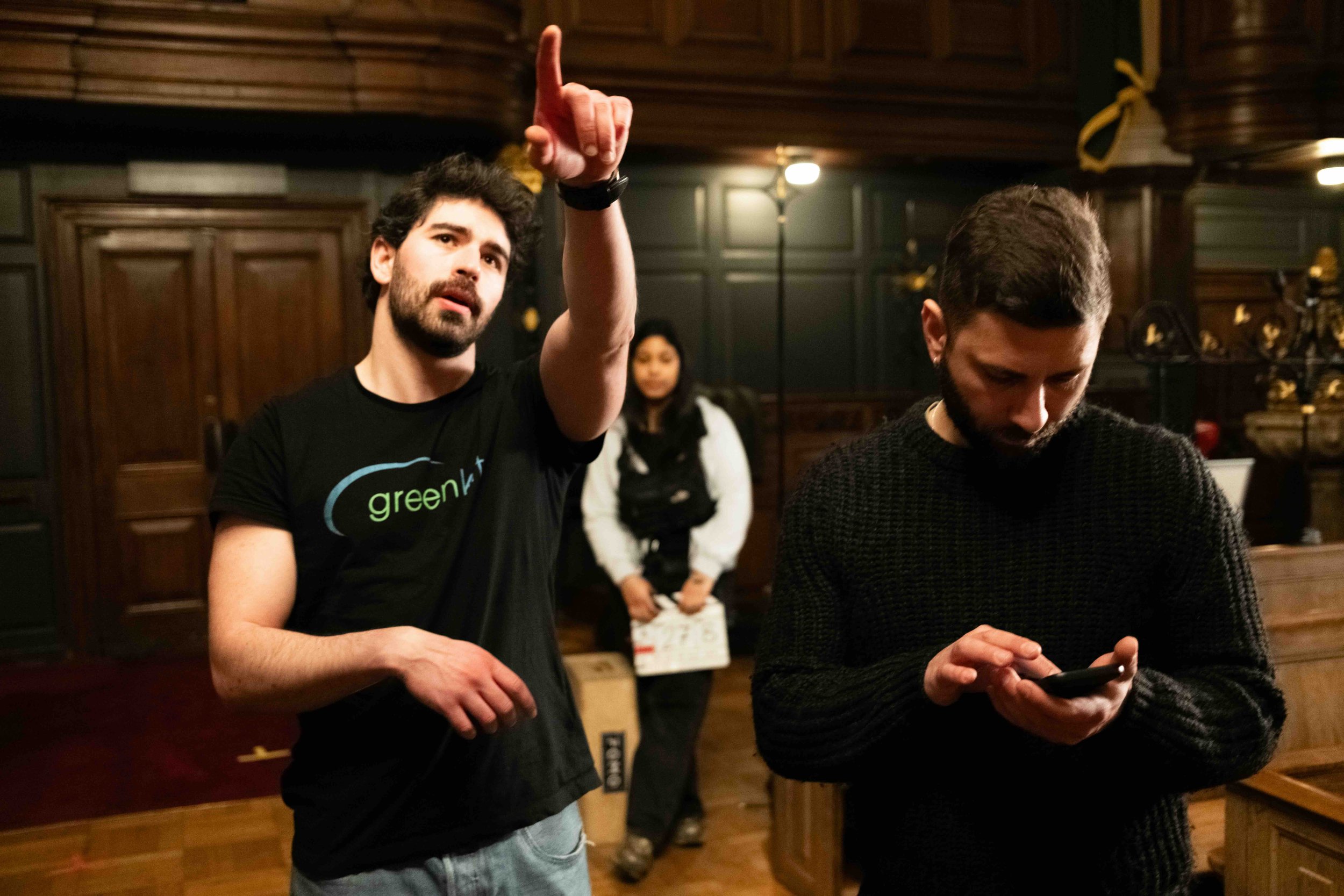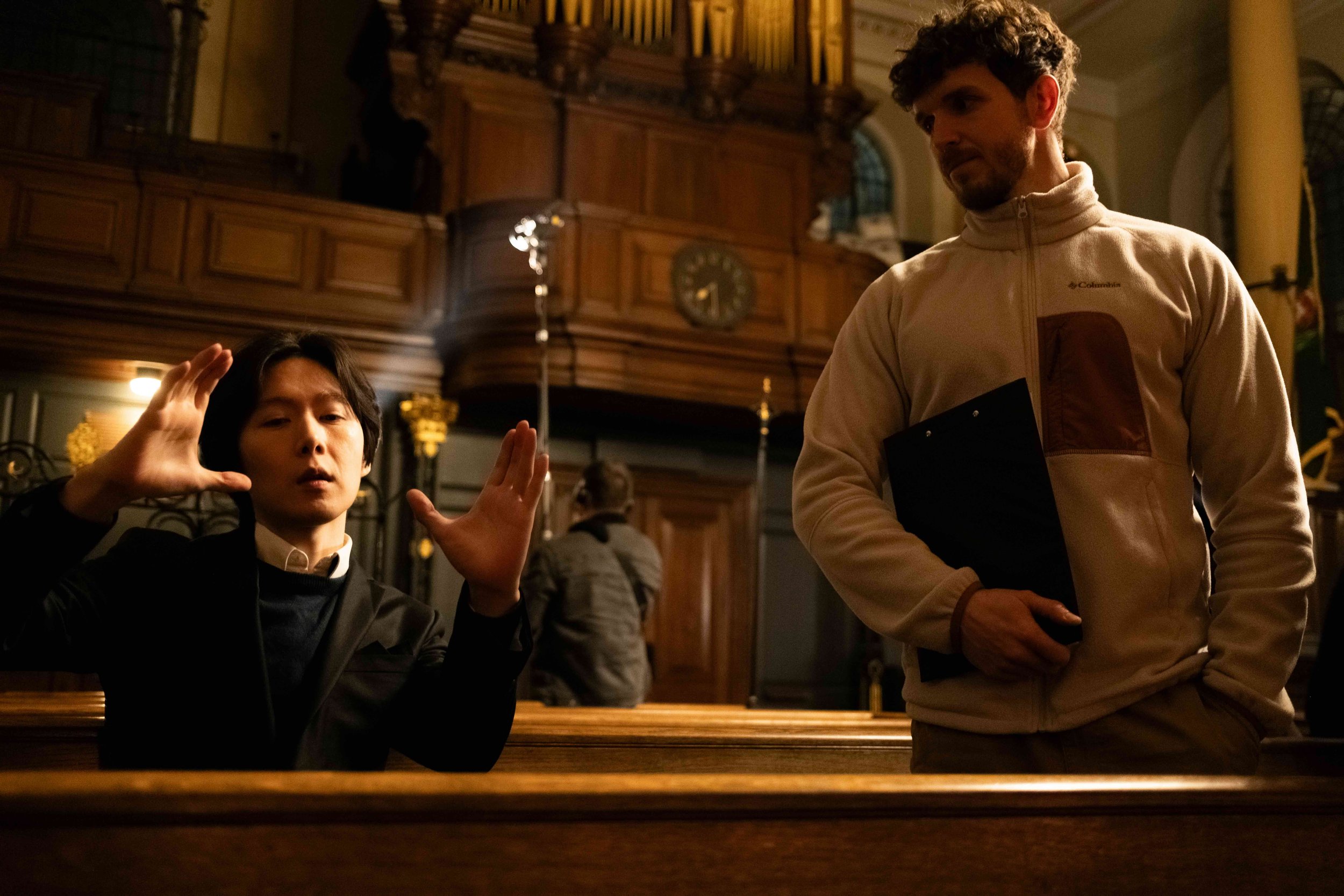Things Between Heaven and Earth
A film by Jun Noh
Between a public interview in Vienna and a silent church in London, a writer searches for what may remain when faith itself has gone.
Director’s Statement
Things Between Heaven and Earth
The film begins in a theatre in Vienna, where a writer speaks publicly about his latest book. His words are rehearsed, precise, at times self-protective. What he says is not always sincere but performative, a way of controlling his story before others can. In counterpoint, he walks silently into a church in London, urged by his interviewer to meet his estranged father.
The encounter never takes place. What unfolds is not reconciliation or healing, but waiting. Between the polished words of public speech and the weight of private silence, the man confronts memory, faith, and the absence of both.
The book he has just published shares the film’s title, Things Between Heaven and Earth. In that novel, its characters hover between belief and its absence, between meaning and meaninglessness. The man is no different. He wanders through a kind of purgatory, caught between the father he once feared and the God who no longer answers.
The film unfolds across three states of time: what has been remembered, what is spoken, and what is still to come. In Vienna, he performs certainty before an audience. From the past, memories of his father return. In the quiet of a church in London, he steps into a future that offers neither reconciliation nor belief, only a decision that ends his waiting.
In the final moments, the man senses a presence and looks up, believing for an instant that something greater than himself has appeared. Instead, he finds only his own shadow. He chooses to leave the candle burning. The gesture is not indecision but acceptance, a deliberate act that closes the story through action rather than words.
I am drawn to dialogue that is exacting yet unstable, language that seems to hold authority yet slips through contradiction. My characters often reveal themselves in these contradictions, saying more than they mean or less than they intend. The performances are restrained. The composition is formal. I work with rhythm, duration, and silence to sustain tension that does not resolve.
This film searches for the irreversible shift that comes with recognising a longing that continues even when faith does not.

